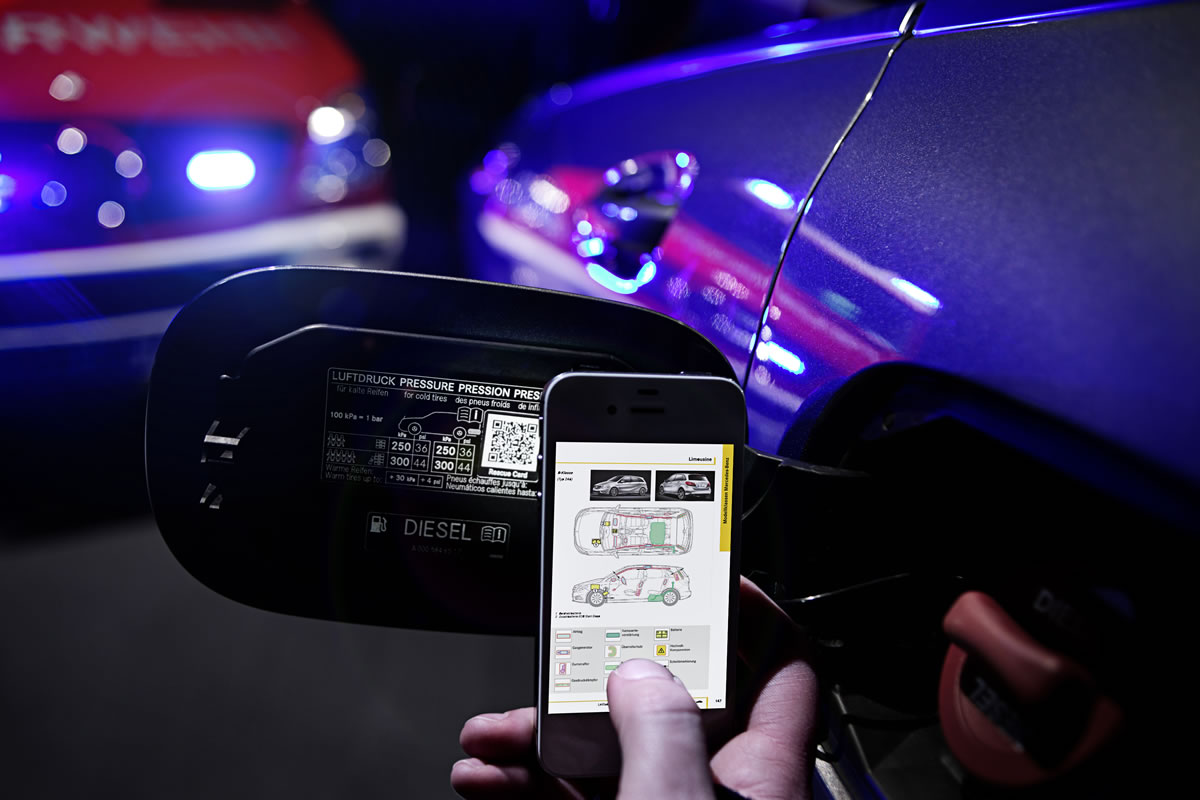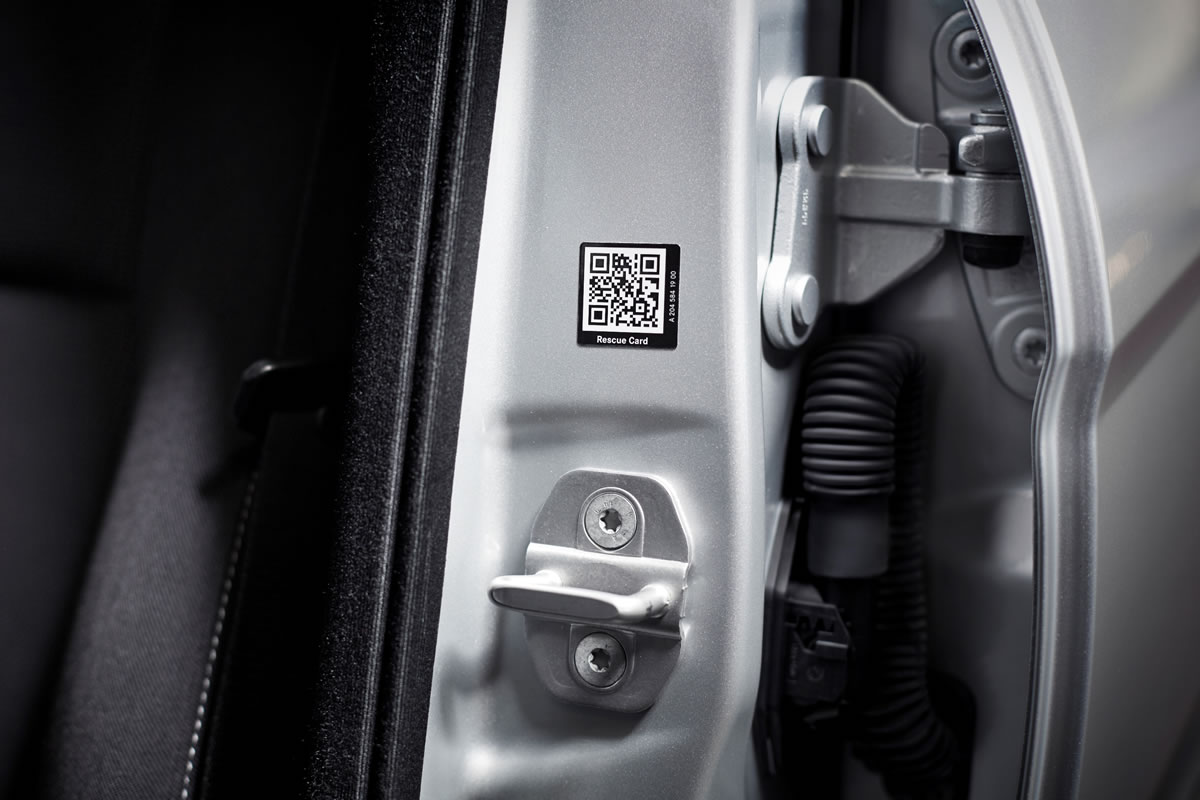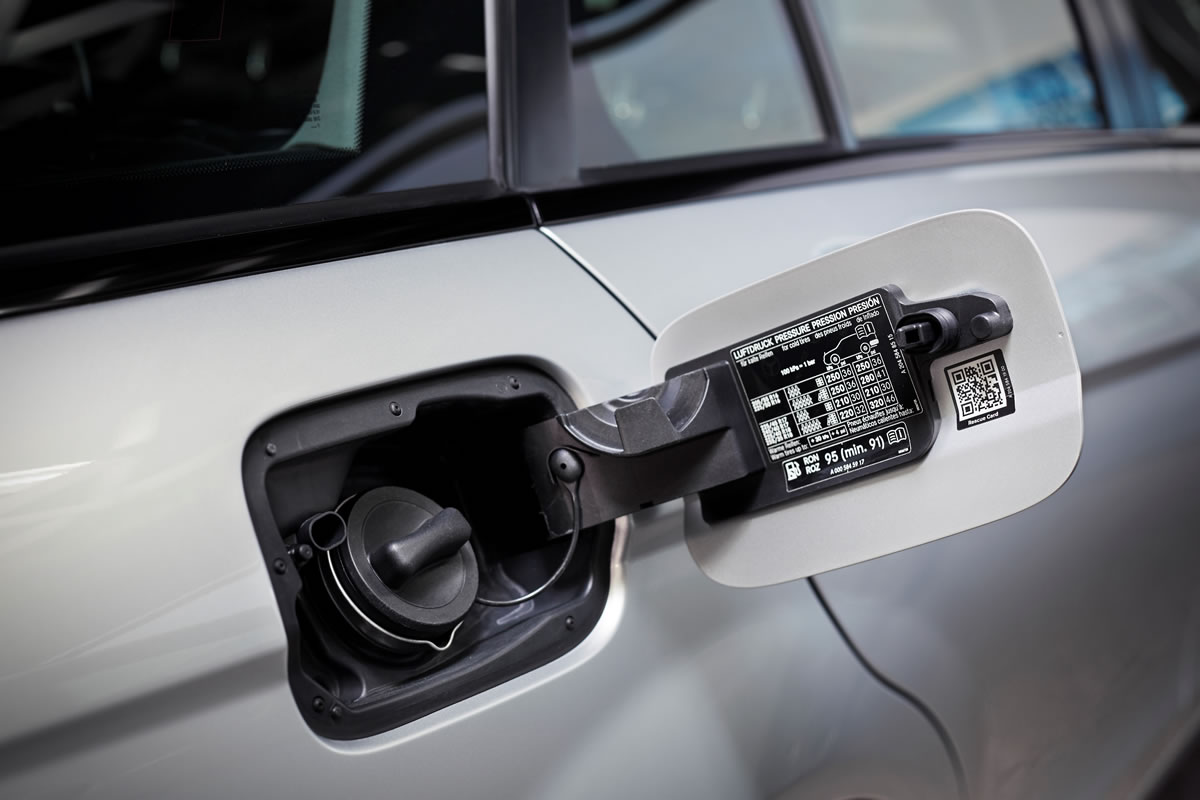When you’re in an accident and your car is seriously damaged, the first thing that needs to be done is to get your free of the vehicle – a dangerous task for all those involved. But if rescuers have your vehicle’s rescue card, showing your car’s specific construction details their job not only got a little easier but a lot less dangerous. On the card is information about the location of airbags, battery, fuel tanks, etc. so that, for example, when using a hydraulic cutter, the best cut point can quickly be targeted. All manufacturers currently have rescue cards available for fitting on their vehicle models, but Daimler wasn’t satisfied, they took it a step further, using technology to further increase the safety of it’s drivers and passengers.

Mercedes-Benz Safety
Daimler is the world’s first car manufacturer to offer direct access to vehicle-specific rescue cards by using a QR code, a type of scannable bar code used by today’s smart phones. “Electronic access by means of a QR code enables Mercedes-Benz to support in the rescue of accident victims”, says Christian Treiber, Director, Service & Parts for Passenger Cars at Mercedes-Benz Global Service & Parts. “The sticker is easy to retrofit to second-hand cars. So this safety benefit is something we can offer not just to owners of new Mercedes-Benz vehicles.” The QR code has been fitted as standard in all new Mercedes-Benz cars since the end of 2013 and is to be fitted in smart vehicles starting in January of this year. With immediate effect, the QR code can be installed in all Mercedes-Benz and smart used vehicles manufactured from 1990 onwards. The fitting must be done by an authorised Mercedes-Benz or smart service station. Treiber: “In many countries, we are offering our customers the chance to have the QR code retrofitted free of charge.” For ease of access, the QR code stickers are attached to the fuel filler flap and the B-pillar on the opposite side. Accident investigators have established that these two areas offer easy external access and only in rare cases are both of them seriously damaged.The black-and-white scannable symbol can be seen practically everywhere today: on adverts, packaging and even on business cards. It comprises a string of characters that enable a quick response (hence QR) and take the user to a predetermined web address. When the code is scanned with a smartphone or tablet, with an existing internet connection the rescue card can be quickly accessed to provide safety-relevant vehicle informations. The rescue card is currently available in seven languages, and from February in 23 languages, and will display in the language of the end user’s mobile device. If the language required is not available, the text will revert to English. An app for the emergency services that will allow the rescue card to be read even without an internet connection is planned to be available by the end of June 2014. Mercedes-Benz has waived its right to make a patent application so that the technology will be available for everyone.





